
Salons are a chance for the American Friends to virtually gather from around the world to discuss all things Musée de Montmartre.
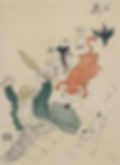
Henri de Toulouse-Lautrec, La Vache enragée, 1896, lithograph, 79 x 57 cm
The American Friends Salons
The AFMM salons bring the Montmartre period to life. Although each salon addresses a different subject, all are infused with the frothy excitement of the Montmartre period.
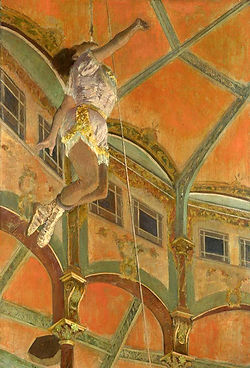
THE CIRCUS FERNANDO: DEGAS, TOULOUSE-LAUTREC AND SEURAT.
Presented by: Richard Thomson
March 5, 2024
The lecture focused on three artists – Edgar Degas, Henri de Toulouse-Lautrec and Georges Seurat, and on one painting by each of them: Miss Lala at the Cirque Fernando (1879, London, National Gallery), Au Cirque Fernando (Equestrienne) (1887-8, Chicago, Art Institute) and Cirque (1890-1, Paris, Musée d’Orsay). It outlined the development of the circus in Paris and the treatment of the subject by contemporaries such as Auguste Renoir and James Tissot. The gradual development of the Cirque Fernando in the 1870s – from tent to dedicated building – and moving on to Degas’s painting, exhibited at the 1879 Impressionist exhibition. Having discussed Miss Lala herself, the lecture explored Degas’s composition for his modern circus subject in relation to his deep knowledge of past art. Toulouse-Lautrec’s involvement with circus subjects in the later 1880s were assessed, showing the variety of his work and the sense of humor it evokes. Finally, Seurat’s Cirque, exhibited in 1891, was analyzed, bringing into account both his engagement with the contemporary posters of Jules Chéret and his interest in the work of Eugène Delacroix.
PRESENTER BIOGRAPHY: Richard Thomson is Research Professor in the History of Art. He was Watson Gordon Professor of Fine Art between 1996 and 2018, having previously taught at the University of Manchester. He read Modern History at St Catherine’s College, Oxford, has a postgraduate Diploma in the History of Art from Oxford, and gained both an MA and a PhD from the Courtauld Institute, London University. His publications in the field of late nineteenth century French art are extensive. His books include Toulouse-Lautrec (1977), Seurat (1985), Degas. The Nudes (1988), Edgar Degas: Waiting (1995), Framing France. The Representation of Landscape in France, 1870-1914 (editor, 1998), Soil and Stone. Impressionism, Urbanism, Environment (co-editor with Frances Fowle, 2003), The Troubled Republic. Visual Culture and Social Debate in France, 1889-1900 (2004), Vincent van Gogh: The Starry Night (2008), and Art of the Actual. Naturalism and Style in Early Third Republic France, 1880-1900 (2012). His latest book is The Presence of the Past in French Art, 1870-1905. Modernity and Continuity (2021). Richard has curated or co-curated many exhibitions for major international museums, which have been seen by some 5 million people. In 2012, the French government appointed him Officier dans l'Ordre des Arts et des Lettres, promoting him to Commandeur in 2018.
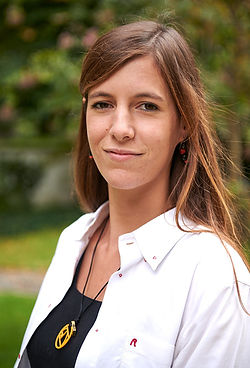
MEET THE NEW CURATOR OF THE MUSÉE DE MONTMARTRE
Presented by: Alice Legé
February 29, 2024
Alice Legé presented her background and her favorite works in the Musée's collection. She also touched on future exhibitions and programs.
PRESENTER BIOGRAPHY: Head of curatorial at the Musée de Montmartre in Paris, Dr. Alice S. Legé (1992) is a member of ICOM, and affiliated researcher of the Jewish Country Houses project (University of Oxford). After a master’s degree at the École du Louvre and three advanced training courses in cultural management, she obtained her PhD in Art History in 2020, with a thesis on the Cahen d’Anvers family. Her research focuses on the relationship between residences and collections, historical gardens, and Jewish patronage in the nineteenth century. In the last ten years she worked for the Royal Palace of Caserta, the Louvre, the Galleria Spada, the CNRS and the Embassy of Portugal in France. As curatorial fellow at the Medici Archive Project, she co-curated the exhibition The Jews, the Medici and the Ghetto of Florence (Gallerie degli Uffizi, Palazzo Pitti, 2023-2024). Alice Legé also introduced us to the Musée's next temporary exhibition: Auguste Herbin, le maître révélé. 1882-1960. We enjoyed the first comments on the work of this exciting artist, who was part of all the avant-gardes and creative breakthroughs of the 20th century. The American Friends of Musée de Montmartre’s donors are playing an essential role in enabling the Musée to organize this first retrospective in Paris, the city the artist called home.
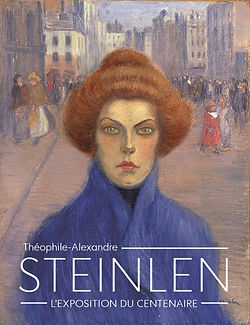
THÉOPHILE-ALEXANDRE STEINLEIN A CURATOR LED TOUR OF THE MUSÉE DE MONTMARTRE EXHIBITION
Presented by Leila Jarbouai, exhibition curator
December 21, 2023
Leila Jarbouai presented us with her favorite works and discussed them. We also virtually walked through the exhibition. Many of the AFMM enjoyed the Vernissage and exhibition in person. It was a treat!
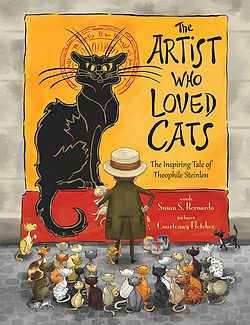
THE ARTIST WHO LOVED CATS: A BOOK SALON WITH AUTHOR SUSAN BERNARDO AND ILLUSTRATOR COURTENAY FLETCHER
November 14, 2023
Author Susan Bernardo and illustrator Courtenay Fletcher joined us to share their creative process and inspiration for the book. The Artist Who Loved Cats is an illustrated biography of the artist Théophile-Alexandre Steinlen, renowned for his iconic posters of the French "Chat Noir." Beyond being a mere biography, The Artist Who Loved Cats stands as a jubilation of art, inspiration, and the inclination to heed one's heart in crafting a life that resonates with passion. This splendid volume is intended for children aged between 6 and 9 years but can be enjoyed by all!
THE VEXATIONS: A BOOK SALON WITH AUTHOR CAITLIN HORROCKS
Presented by Saskia Ooms, former head curator Musée de Montmartre
We gathered by Zoom and discussed The Vexations with its charming author, Caitlin Horrocks. This captivating novel about love, family, genius, and the madness of art, focuses on the life of eccentric composer Erik Satie during La Belle Époque Paris.
PRESENTER BIOGRAPHY: Author Caitlin Horrocks has been described as “startlingly ingenious” (Boston Globe), and “impressively sharp” (New York Times Book Review). The Vexations was named one of the Ten Best Books of 2019 by the Wall Street Journal.
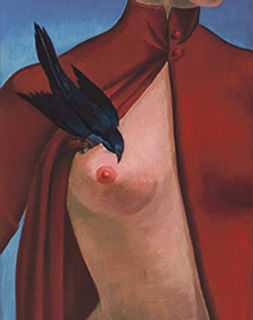
WOMEN ARTISTS AND SURREALISM. A CURATOR LED TOUR OF THE MUSÉE DE MONTMARTRE EXHIBITION.
Presented by Saskia Ooms, former head curator Musée de Montmartre
May 30, 2023
We learned that surrealism sparked significant aesthetic changes and an ethical revolution in the twentieth century. Men were not the only driving force behind surrealism and its transgressive orientation. Although women played a decisive role in the movement, their works were neglected by museums and undervalued by the art market. Surrealism provided these women artists and poets with opportunities for artistic expression and creativity that probably had no equivalent in the other avant-garde movements. Their freedom often found expression via the appropriation and development of themes initiated by the movement’s founders.
PRESENTER BIOGRAPHY: Phillip Dennis Cate is a widely published specialist of 19th century French art whose expertise covers Montmartre, sculpture, and Japonism. He has organized programs for international institutions such as The Bibliothèque Nationale, Paris; The Hermitage Museum, St. Petersburg; The Russian National Library, St. Petersburg; The Van Gogh Museum, Amsterdam; The National Museum of Japanese Art, Tokyo; and The Imperial Household, Tokyo. Previously the Director of the Jane Voorhees Zimmerli Art Museum in New Jersey and a Curator of Special Exhibitions and Consultant for the Collection and Renovation of the Musée de Montmartre in Paris. Cate now works as an independent curator and critic.
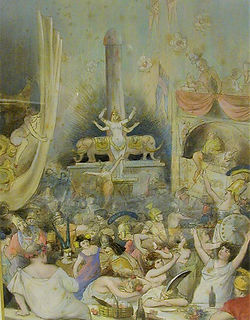
THE QUAT’Z ARTS BALL AND CABARET
Presented by: Phillip Dennis Cate
March 28, 2023
The “Cabaret of the Four Arts” was a venue in Paris at the turn of the century. The interdisciplinary mix of arts allowed for creative and avant-garde performances. Similar to the Chat Noir, the Quat’z Arts was a gathering place for artists, performers poets, musicians, composers and the like. It attracted many exciting artists who used the space for exhibition. The Quat’z Arts Ball was an annual costume ball first held in 1892. It was considered a riotous bachanialia. The Balls had different themes. It was held particularly for the students of the four branches of architecture, painting, sculpture, and engraving of the École des Beaux-Arts.
PRESENTER BIOGRAPHY: Phillip Dennis Cate is a widely published specialist of 19th century French art whose expertise covers Montmartre, sculpture, and Japonism. He has organized programs for international institutions such as The Bibliothèque Nationale, Paris; The Hermitage Museum, St. Petersburg; The Russian National Library, St. Petersburg; The Van Gogh Museum, Amsterdam; The National Museum of Japanese Art, Tokyo; and The Imperial Household, Tokyo. Previously the Director of the Jane Voorhees Zimmerli Art Museum in New Jersey and a Curator of Special Exhibitions and Consultant for the Collection and Renovation of the Musée de Montmartre in Paris. Cate now works as an independent curator and critic.
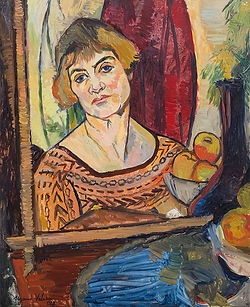
SUZANNE VALADON: "AN INDEPENDENT SPIRIT"
Presented by: Dr. Corrinne Chong
February 7, 2023
Suzanne Valadon’s vigorous assertion of line, visceral embrace of color, and unflinching faithfulness to naturalism defined her gender-defying style – one which subverted expectations of la femme peintre. In the critical reception, writers often ascribed the pictorial strengths in her art to masculine attributes and dismissed the truth of her vision as “vulgar.” Through the themes of “virilité” and “verité” (recurring terms in the discourse), this talk focuses on the ways in which Valadon disrupted conventions of l’art féminin. Topics included the psychological realism of her portraits, the experience of embodiment in her nudes, and her distancing from feminist artist groups to uphold her status as “un esprit indépendant.”
PRESENTER BIOGRAPHY: Corrinne Chong holds a PhD in Art History from the University of Edinburgh. From 2017 to 2019, she was a key member of the curatorial team for the Early Rubens exhibition at the Art Gallery of Ontario in Toronto. Most recently, she was a research consultant for Suzanne Valadon: Model, Painter, Rebel at the Barnes Foundation. She is currently developing an exhibition project on the intersections between art history and opera scenography. Her upcoming publication explores the dialogue between art, music, and mysticism at the fin-de-siècle.
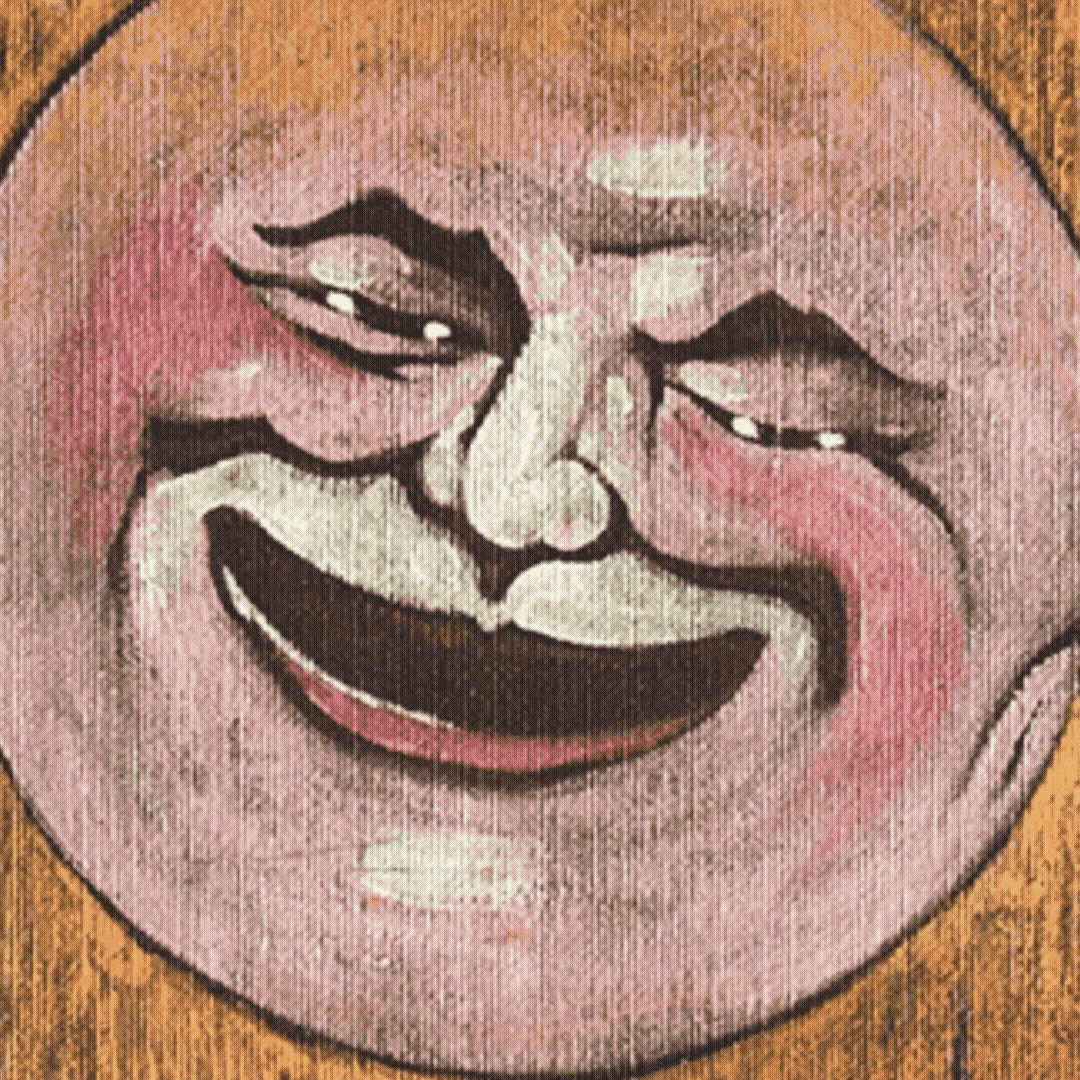
THE CHAT NOIR CABARET: WHAT, WHERE, WHEN AND WHY IT IS IMPORTANT
Presented by: Phillip Dennis Cate
January 25, 2023
This salon focused on the Chat Noir cabaret, thought to be the first modern cabaret. During its heyday it was a bustling nightclub that was part artist salon and part raucous music hall. From 1882 to 1895 the cabaret published a weekly magazine of the same name, featuring literary writings, poetry and political satire. It was the subject of the iconic Théophile Steinlen poster in 1896.
PRESENTER BIOGRAPHY: Phillip Dennis Cate is a widely published specialist of 19th century French art whose expertise covers Montmartre, sculpture, and Japonism. He has organized programs for international institutions such as The Bibliothèque Nationale, Paris; The Hermitage Museum, St. Petersburg; The Russian National Library, St. Petersburg; The Van Gogh Museum, Amsterdam; The National Museum of Japanese Art, Tokyo; and The Imperial Household, Tokyo. Previously the Director of the Jane Voorhees Zimmerli Art Museum in New Jersey and a Curator of Special Exhibitions and Consultant for the Collection and Renovation of the Musée de Montmartre in Paris. Cate now works as an independent curator and critic.

PART I. MONTMARTRE ARTISTS AND THE DREYFUS AFFAIR
PART II. THE LEGACY OF FIN-DE-SIÈCLE MONTMARTRE
Presented by: Dennis Phillip Cate
May 30, 2022
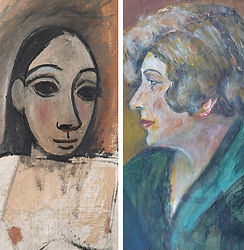
FERNANDE OLIVIER AND PABLO PICASSO – IN THE INTIMACY OF THE BATEAU LAVOIR. A CURATOR LED TOUR OF THE MUSÉE DE MONTMARTRE EXHIBITION
Presented by: Saskia Ooms, former head curator Musée de Montmartre
November 16, 2022
Often described as a Mediterranean Fauvist, Charles Camoin (1879-1965), through his ties to Paris and the bohemian Montmartre, was part of the international avant-garde. Affiliated with Fauvism, linked to Matisse, Marquet and Manguin, he never gave up his artistic independence. The exhibition allows us to rediscover the work of the painter by integrating a hundred paintings and drawings, some of which have never been shown before. It explores various historical and thematic episodes in the artist's life and analyzes the evolution of his pictorial language, based on colored sensation. discovering his art means embracing the love of color that he shared with Fauvism masters. It also means identifying his more somber phases and profound doubts, which led him to destroy almost eighty of his pictures in 1914—a truly radical act for an artist. But he also experienced a profound pleasure in painting “colored sensations and the life they convey.” He painted these sensations spontaneously and sincerely, executing highly worked paintings and others that were sketched. This was the emergence of a form of painting that was free, the fruit of “a sincerity that expressed itself directly, something like falling in love or a cry from the heart,” to quote the artist. The exhibition "Charles Camoin, the Free Fauve" is a tribute to an artist who devoted his life to what he did best: capturing beauty and turning it into a symphony of colors on canvas.
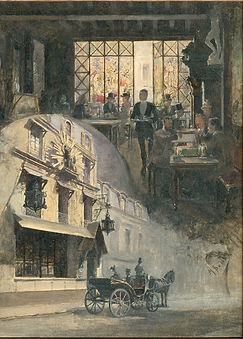
MONTMARTRE AT THE FIN DE SIÈCLE: THE BIRTH OF MODERN ART
Presented by: Phillip Dennis Cate
May 11, 2022
Montmartre became the birthplace of modern and contemporary art and the artistic center of avant-garde art, literature, and theater during the second half of the 19th century and the first decade of the 20th century. These artists gathered in Montmartre cafés, exchanging ideas and engaging in discourse. The precedent of avant-garde artists both meeting in and depicting Montmartre cafés was established by the Impressionists in the 1870's. The Café Guerbois, the Café de la Nouvelle Athènes, and the Café Rat Mort were regular gathering places for Degas, Renoir, Manet, and Monet. Manet's apartment and studio were just south of the Place Clichy, and, between 1875 and 1876, Renoir rented studio space in what is now the Musée de Montmartre at 12-14 rue Cortot. It was there that Renoir painted Bal du Moulin de la Galette, La Balançoire (Paris, Musée d'Orsay), and Le Jardin de la rue Cortot (Pittsburgh, Carnegie Institute Museum of Art). The Chat Noir cabaret and its habitués were the principal forces behind the emergence of Montmartre in the early 1880s as the focal point of avant-garde artistic and literary life in Paris. The center of Montmartre café life was the Chat Noir cabaret, which was founded at the end of 1881 by the failed artist, Rodolphe Salis. He proclaimed it a "cabaret artistique" and invited young artists, writers, composers, and musicians to use it as their base of activity. The Chat Noir cabaret and its habitués (especially the proto-Dada/ Surrealist group of artists and writers called the "Incohérents") were the principal forces behind the emergence of Montmartre in the early 1880s as the focal point of avant-garde artistic and literary life in Paris. In the 1880s, Rodolphe Salis promoted the Chat Noir cabaret with its important, proto-cinema shadow theater as "the most extraordinary cabaret in the world" and Montmartre as "the center of the world." He was not completely exaggerating. With their avant-garde themes of cafes, bars, circus, dance halls, prostitutes, and everyday life depicted in seemingly spontaneous strokes of pure pigments of oil, watercolor, or pastel, Montmartre Impressionists such as Manet, Degas, and Renoir exerted their influence on a new generation of Montmartre artists, writers, and musicians who were drawn to and/or generated the activities of the Chat Noir in a bid to be "modern.” When evaluating turn-of-the-century art in France, the artists who stand out as major contributors to Western art - Mary Cassatt, Georges Seurat, Vincent Van Gogh, Henri de Toulouse-Lautrec, Suzanne Valadon, the Nabis, Pablo Picasso, Marcel Duchamp, and Amedeo Modigliani - all evolved out of the Montmartre cultural matrix. In fact, when Picasso, Duchamp, F. Kupka, Juan Gris, Kees Van Dongen, and other future 20th century avant-garde artists first came to Montmartre around 1900, they already had knowledge of and were influenced by the styles and subject matter of the previous generation of Montmartre artists such as T.A. Steinlen and Toulouse-Lautrec. Monochromatic art and conceptual art, which are dominant elements of 20th and 21st century art, derive directly from the art produced by the incredible group of Montmartre artists and writers at the end of the 19th century called the "Incoherents." For at least a quarter of a century, Montmartre was the center of the world for Western art and culture, and its contributions reverberate strongly even today.
PRESENTER BIOGRAPHY: Phillip Dennis Cate is a widely published specialist of 19th century French art whose expertise covers Montmartre, sculpture, and Japonism. He has organized programs for international institutions such as The Bibliothèque Nationale, Paris; The Hermitage Museum, St. Petersburg; The Russian National Library, St. Petersburg; The Van Gogh Museum, Amsterdam; The National Museum of Japanese Art, Tokyo; and The Imperial Household, Tokyo. Previously the Director of the Jane Voorhees Zimmerli Art Museum in New Jersey and a Curator of Special Exhibitions and Consultant for the Collection and Renovation of the Musée de Montmartre in Paris. Cate now works as an independent curator and critic.

CHARLES CAMOIN, A FREE FAUVE. A CURATOR LED TOUR OF THE MUSÉE DE MONTMARTRE EXHIBITION
Presented by: Saskia Ooms, former head curator Musée de Montmartre
March 16, 2022
Often described as a Mediterranean Fauvist, Charles Camoin (1879-1965), through his ties to Paris and the bohemian Montmartre, was part of the international avant-garde. Affiliated with Fauvism, linked to Matisse, Marquet and Manguin, he never gave up his artistic independence. The exhibition allows us to rediscover the work of the painter by integrating a hundred paintings and drawings, some of which have never been shown before. It explores various historical and thematic episodes in the artist's life and analyzes the evolution of his pictorial language, based on colored sensation. discovering his art means embracing the love of color that he shared with Fauvism masters. It also means identifying his more somber phases and profound doubts, which led him to destroy almost eighty of his pictures in 1914—a truly radical act for an artist. But he also experienced a profound pleasure in painting “colored sensations and the life they convey.” He painted these sensations spontaneously and sincerely, executing highly worked paintings and others that were sketched. This was the emergence of a form of painting that was free, the fruit of “a sincerity that expressed itself directly, something like falling in love or a cry from the heart,” to quote the artist. The exhibition "Charles Camoin, the Free Fauve" is a tribute to an artist who devoted his life to what he did best: capturing beauty and turning it into a symphony of colors on canvas.

